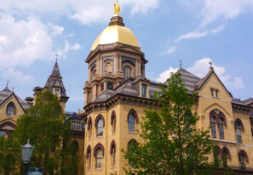About two weeks ago, my brother turned 22. As I smiled at the embarrassing photos my younger brother and I had posted on Facebook to mark the occasion (one of which shows me sobbing and soaking wet, my older brother dry and gloating), it occurred to me how far we have come. While we were the inseparable duo as the only two Buono kids around, we later hit the awkward middle school phase when we hardly spoke—and when we did speak, it mostly consisted of teasing, whining, or shouting. Thankfully, we are back to being great friends, probably even closer than we had been before.
Thinking about the development of our friendship made me take a closer look at the other bonds I have formed over the years. Each of my siblings and I have a unique relationship, and each has developed in its own way. I have gone from dressing up one of my brothers in sparkly outfits to helping him with his summer reading and jamming out to Pharrell Williams’ “Happy.” My little sister and I have always shared a room, but she has gotten much better at not waking me up. Friendships outside of my family go through their own phases as well, and contemplating those phases has helped me in many ways.
For one thing, the friendships I formed (or at least attempted to form) in middle school looked very different from the ones I formed in high school. Over time, the types of people I interacted with changed, as did various traits of my personality. Even now, time continues to influence the progression of my friendships. Since graduating from high school, I have gradually discovered which friends I am most committed to keeping in touch with. That mutual effort has deepened several bonds, even though I do not see those high school friends as often.
I also have found that distance between people can also affect the phases of a friendship. One of my best friends moved to California in eighth grade, but we still write letters to each other and call regularly, building an intimate and long-lasting friendship. Time and distance certainly present phases that require effort, but they also open opportunities for great friendships to grow.
In his book Genuine Friendship, Philip Halfacre describes friendship as a form of love, which, in essence, is a “union of persons.” In order for people to unite and stay united—even amidst the challenges of distance and time—each person must make a constant effort to give of himself or herself. You can’t connect with someone else if you don’t get outside yourself.
Of course, in college, most of our friendships have not been developed years in advance, nor are we living miles apart (although if you live on Mod Quad, you might as well be). This physical closeness also can affect the stages of friendship. If your college social scene is anything like mine, you have found that the way you make friends here is different from high school—you never know what conversations you might spark in the dorm or dining hall—and any friendships you did bring from high school have adjusted to the college world. Plus, having a roommate presents a whole new level of interaction and cooperation.
The closeness of college can greatly advance friendships—for instance, my current roommate is now one of my best friends on campus—but it can also pose challenges. When we interact with others so frequently, our ups and downs become more exposed. It’s easy to get along with our favorite group when things are going well, but it’s not so easy to be relaxed and cheerful with everyone when a class is getting stressful, there is a conflict at home, or the weather is getting especially cruel.
These are the times when the idea of a persevering friendship becomes more real. When Horton the Elephant tells the Whos, “I’ll stick by you small folks through thin and through thick!” it sounds like a great phrase we would like to exchange with our closest friends. It’s most difficult—and most valuable—to roll up our sleeves and actually stick by each other in our best and worst moments.
Some stages of life may cause a friendship to fade—due to new circumstances, lifestyles, or personal changes—and this is not always a bad thing. Our friendships evolve as we grow and learn more about ourselves, and a bond that suits one period of life may not suit the next in the same way. Still, factors like time, distance, and closeness also can unearth our deepest friendships, the ones we work at for a lifetime.
Later in Genuine Friendship, Halfacre writes, “Friendship is part of the somewhat mysterious interaction between people who love each other.” The phases of friendship change, often in ways we cannot explain, but if we embrace them and try to live them well, each phase can be a time of growth and love.
Whether I am with a new acquaintance, lifelong friend, or the friend I had been closer with last year, I find the words of Saint John of the Cross very helpful: “Where there is not love, put love—and you will find love.”
Sophia Buono is a sophomore PLS major and ESS minor living in Lyons Hall. Her seven best friends are her mom, dad, and siblings, and—for better or for worse—she doesn’t anticipate those friendships ending. She’s always on the lookout for new friends, so if you like skydiving, spelunking, and chatting over animal crackers, contact her at sbuono@nd.edu.





Leave a Reply